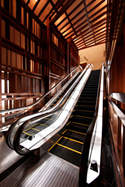Tutorial 1
Sparse stochastic processes: A statistical framework for compressed sensing and biomedical image reconstruction
Sparse stochastic processes are continuous-domain processes that admit a parsimonious representation in some matched wavelet-like basis. Such models are relevant for image compression, compressed sensing, and, more generally, for the derivation of statistical algorithms for solving ill-posed inverse problems.
This tutorial focuses on the extended family of sparse processes that are specified by a generic (non-Gaussian) innovation model or, equivalently, as solutions of linear stochastic differential equations driven by white Lévy noise. We provide a complete functional characterization of these processes and highlight some of their properties.
The two leading threads that underlie the exposition are:
- the statistical property of infinite divisibility, which induces two distinct types of behavior—Gaussian vs. sparse—at the exclusion of any other;
- the structural link between linear stochastic processes and spline functions which is exploited to simplify the mathematics.
The proposed continuous-domain formalism lends itself naturally to the discretization of linear inverse problems. The reconstruction is formulated as a statistical estimation problem, which suggests some novel algorithms for biomedical image reconstruction, including magnetic resonance imaging and X-ray tomography. We present experiments where the proposed scheme outperforms the more traditional convex optimization techniques (in particular, total variation).
- The lecture notes for the tutorial are available on the web at http://www.sparseprocesses.org
Outline:
- Introduction: from splines to Lévy processes
- Generalized stochastic processes: continuous-domain white noise, innovation models, and the characteristic functional
- Sparse representations: finite difference operators vs. operator-like wavelets.
- Infinite divisibility and transform-domain statistics: the mathematics of sparsity.
- Recovery of sparse signals: derivation of “optimal” algorithms for signal denoising, and for biomedical image reconstruction, including compressed sensing
- Wavelet-domain methods: shrinkage estimators and refinement using redundant systems in conjunction with statistical consistency.
Contact information
Michael Unser, Professor
Biomedical Imaging Group, EPFL
Mailing address: EPFL, LIB, BM 4.136 (Batiment BM), Station 17, CH-1015 Lausanne, Switzerland
E-Mail: michael.unser@epfl.ch
URL: http://bigwww.epfl.ch/
About the instructor
 Michael Unser is Professor and Director of EPFL’s Biomedical Imaging Group, Lausanne, Switzerland. His main research area is biomedical image processing. He has a strong interest in sampling theories, multiresolution algorithms, wavelets, the use of splines for image processing, and, more recently, stochastic processes. He has published about 250 journal papers on those topics. He is the leading author of An introduction to sparse stochastic processes to be published by Cambridge University Press.
Michael Unser is Professor and Director of EPFL’s Biomedical Imaging Group, Lausanne, Switzerland. His main research area is biomedical image processing. He has a strong interest in sampling theories, multiresolution algorithms, wavelets, the use of splines for image processing, and, more recently, stochastic processes. He has published about 250 journal papers on those topics. He is the leading author of An introduction to sparse stochastic processes to be published by Cambridge University Press.
From 1985 to 1997, he was with the Biomedical Engineering and Instrumentation Program, National Institutes of Health, Bethesda USA, conducting research on bioimaging and heading the Image Processing Group.
Dr. Unser is a fellow of the IEEE (1999), an EURASIP fellow (2009), and a member of the Swiss Academy of Engineering Sciences. He is the recipient of several international prizes including three IEEE-SPS Best Paper Awards and two Technical Achievement Awards from the IEEE (2008 SPS and EMBS 2010).













